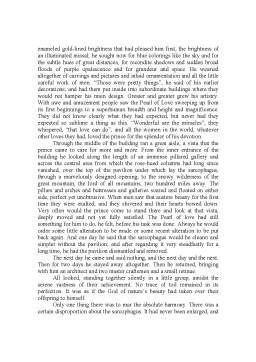Extras din referat
The pearl is lovelier than the most brilliant of crystalline stones, the moralist declares, because it is made through the suffering of a living creature. About that I can say nothing, because I feel none of the fascination of pearls. Their cloudy luster moves me not at all. Nor can I decide for myself upon that age-long dispute whether The Pearl of Love is the cruelest of stories or only a gracious fable of the immortality of beauty.
Both the story and the controversy will be familiar to students of medieval Persian prose. The story is a short one, though the commentary upon it is a respectable part of the literature of that period. They have treated it as a poetic invention and they have treated it as an allegory meaning this, that, or the other thing. Theologians have had their copious way with it, dealing with it particularly as concerning the restoration of the body after death, and it has been greatly used as a parable by those who write about aesthetics. And many have held it to be the statement of a fact, simply and baldly true.
The story is laid in North India, which is the most fruitful soil for sublime love stories of all the lands in the world. It was in a country of sunshine and lakes and rich forests and hills and fertile valleys; and far away the great mountains hung in the sky, peaks, crests, and ridges of inaccessible and eternal snow. There was a young prince, lord of all the land; and he found a maiden of indescribable beauty and delightfulness and he made her his queen and laid his heart at her feet. Love was theirs, full of joys and sweetness, full of hope, exquisite, brave and marvelous love, beyond anything you have ever dreamt of love. It was theirs for a year and a part of a year; and then suddenly, because of some venomous sting that came to her in a thicket, she died.
Preview document
Conținut arhivă zip
- The Pearl of Love.doc

















